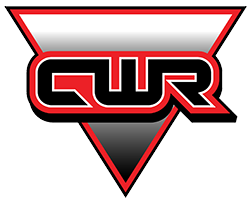
Designing a Cold Storage Layout for Beef Processing Facilities
Effective cold storage is essential in beef processing facilities to preserve product quality, maintain food safety, and optimize operational efficiency. From temperature control and zoning to regulatory compliance and worker safety, each aspect of cold storage design has a major impact on the smooth functioning of a beef processing plant. Below are key considerations and best practices for designing an effective cold storage layout.
Assess Storage Requirements
Before finalizing your design, conduct a thorough assessment of daily and seasonal production volumes. Consider the peak output (e.g., during high-demand periods) and ensure sufficient storage to handle these surges without compromising temperature control or workflow.
Also plan for future growth and potential changes in market demand. Building a flexible design—whether through modular storage units or the ability to integrate additional refrigeration capacity—can save time, money, and downtime when expansions become necessary.
Temperature and Humidity Control
Beef cold storage typically falls between 28°F (-2°C) and 32°F (0°C), balancing the need to keep the meat cold without risking partial freezing. These cooler environments slow microbial growth and preserve freshness.
Proper humidity levels (typically around 85-90% for beef) also help prevent product weight loss from dehydration. Monitoring systems should track humidity continuously and trigger adjustments or alerts when levels move outside the optimal range.
Layout and Zoning
Your cold storage facility should have a clearly defined receiving area for incoming beef products. This zone should allow for quick temperature checks, inspection, and the initial labeling of products before they enter storage.
Avoid cross-contamination by establishing distinct areas for raw carcasses versus packaged or ready-to-ship products. Ideally, each zone will have separate entry and exit points, physical barriers, and dedicated handling equipment.
Additionally, thoughtful traffic flow reduces bottlenecks and preserves product quality. Aisles and pathways should be arranged so employees, forklifts, and pallet jacks can navigate easily without compromising safety or risking damage to stored goods.
Sanitation and Maintenance
All surfaces in cold storage areas—floors, walls, and ceilings—should be constructed from materials that are durable, impermeable, and easy to clean. Central Washington Refrigeration often opts for stainless steel or aluminum racking systems due to their corrosion resistance and ease of sanitization.
Non-slip, waterproof flooring with proper drainage is also critical. Standing water increases the risk of bacterial growth and can create safety hazards. Furthermore, be sure to implement regular cleaning and sanitizing schedules once your cold storage is complete. This includes daily spot cleaning as well as comprehensive, routine deep cleaning to ensure facility hygiene remains up to standard.
Regulatory Compliance
Beef processing facilities in the United States must comply with USDA and FDA guidelines, which set strict parameters for handling, labeling, temperature regulation, and record-keeping.
Proper record-keeping is also vital for food safety audits. We recommend using digital tracking systems to log product temperatures, movements, and storage times. This visibility enhances recall capabilities and demonstrates regulatory compliance.
Energy Efficiency
Investing in high-quality insulation for walls, floors, and ceilings can significantly reduce energy consumption. A reputable manufacturer will ensure all doors, loading docks, and any other openings are well-sealed to prevent temperature fluctuations.
You should also pay attention to the placement and type of refrigeration units based on facility size and production capacity. Energy-efficient compressors, variable-speed fans, and automated defrost cycles can greatly reduce operational costs. LED or other energy-efficient lighting with motion sensors can also help reduce energy usage.
Worker Safety and Training
Prolonged exposure to low temperatures can pose risks to employee health. Provide appropriate protective clothing and regular breaks in designated warmer areas to avoid cold stress.
Train staff on the safe operation of forklifts, pallet jacks, and other heavy equipment in cold environments, where surfaces may be slick. Clear signage and floor markings can also help reduce accidents. Finally, regularly update your team on the latest sanitation procedures, temperature control methods, and regulatory changes.
Cold Storage for Beef Processing Facilities
Designing a cold storage layout for beef processing facilities involves balancing multiple elements: temperature control, workflow efficiency, sanitation, regulatory compliance, and energy management. By carefully assessing storage requirements, you can create a safe, efficient, and cost-effective cold storage environment that preserves the integrity of your beef products. For a free quote on a cold storage facility for your beef processing plant, contact Central Washington Refrigeration today.
We service beyond Central Washington: to Virginia, New York, Michigan and Pennsylvania.
